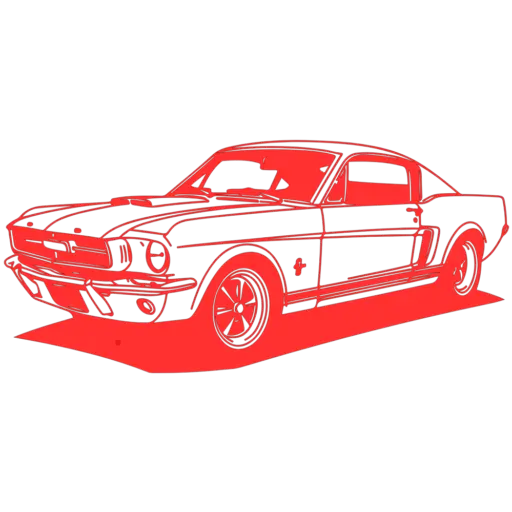If you are passionate about classic cars like me, then you need to know how to make vintage engines.
You'll know there's nothing like the roar of a well-tuned vintage engine. It's not just the sound, it's the history, the essence of a time when mechanics were pure, without so much electronics or computers telling us what to do.
And if you've ever wondered how to build or rebuild a classic engine from scratch, I assure you, you've come to the right place.
I'm not going to give you a boring list of steps. I'm going to tell you, as if we were sitting in the garage with a beer in hand, everything I've learned after years of restoring classic engines.
There are no shortcuts or magic bullets here, but if you follow these tips, I guarantee you'll feel that unparalleled pride when you hear your engine fire up for the first time.
The importance of knowing your engine before you get your hands on it
Before you start building an old engine, you need to know it like the back of your hand. If you think you can jump in without understanding every screw and gasket, I'll warn you that you'll end up with an unfinished project in the garage (and a lot of frustration).
The first thing is to define what type of engine you want to build or restore.
Here are some of the most iconic:
- American V8s (Chevrolet 350, Ford 302, Mopar 426 HEMI) – Beastly, powerful engines with a sound that gives you goosebumps.
- Inline 6-cylinder engines – Absolute reliability, used in many European and Japanese models.
- 4 carbureted cylinders (VW, Peugeot, Fiat, etc.) – Compact, efficient, and perfect for learning old-school mechanics.
Once you've figured out which engine you're going to work with, get the original schematics, research its specifications, and familiarize yourself with how it works. Trust me, this will save you hours (or weeks) of headaches.
Getting the parts: this is where the real hunt begins
When it comes to classic engines, finding original parts is almost like a treasure hunt. Don't expect to walk into an auto parts store and walk out with everything in a box. This is where patience and good contacts make the difference.
Where to find parts: ✔ Junkyards specializing in classic cars. ✔ Parts markets and vintage car shows. ✔ Custom lathe manufacturing. ✔ Contacts on collector forums and groups. ✔ Restoration parts websites.
If you can't find a specific part, you can often have it machined or find modern equivalents that fit. Just make sure they meet the engine's original specifications.
Engine assembly: no room for error
This is where true enthusiasts separate themselves from those who just watch YouTube videos. If you're rebuilding an old engine, every step is crucial. You can't afford to randomly tighten bolts and expect everything to magically work out.
What you absolutely have to do:
- Rectify the block and check for cracks.
- Measure cylinder clearances and adjust pistons.
- Ensure good balancing of the crankshaft and connecting rods.
- Fit new bearings and observe the tightening torques.
- Check the carburetor and adjust the air/fuel mixture.
- Synchronize the mechanical ignition perfectly.
No matter how much you know, always double-check. A small mistake can cost you months of work.
The moment of truth: first start
If you've done everything right, the most anticipated moment has arrived: starting the engine for the first time. This part is both exciting and terrifying. Here are some key tips:
✔ Use new oil and good coolant. ✔ Turn the engine over by hand before starting it. to make sure everything is in its place. ✔ Listen for any strange noises, such as knocking or air leaks. ✔ Adjust the carburation and ignition if necessary. ✔ Let it run for a few minutes before demanding power.
If everything sounds good, congratulations. You've brought a piece of history back to life.
Care and maintenance: don't ruin your work
Building a classic engine is only half the battle. Keeping it in top condition is what really makes the difference.
My golden rules to make your engine last for decades: ✔ Change the oil and filter regularly. ✔ Use good quality fuel, no cheap gas. ✔ Adjust the carburation and ignition every so often. ✔ Do not overheat; check the refrigeration system constantly. ✔ Use it frequently, because a stopped engine is an engine that ages poorly.
What it really means to build a vintage engine
If you've made it this far, you already know that building a classic engine is much more than just assembling parts. It's about understanding its history, respecting its design, and restoring it to its original glory. It's a process that teaches you patience, dedication, and, above all, a love for pure mechanics.
Every time I hear the roar of an engine I've restored, I feel the same thrill I felt when I fired up my first V8. It's hard work, but it's worth every minute.
So if you're thinking of restoring or building a classic engine, my advice is: Do it with passion, do it with patience and enjoy every moment of the process..
And you, what classic engine would you like to build or restore?
+For you: How to identify counterfeit parts when restoring a car

Passionate about classic cars for as long as he can remember, Javier Montoro has dedicated his life to the search, restoration, and preservation of true gems on wheels. With years of experience purchasing, restoring, and maintaining vintage vehicles, he shares his knowledge, stories, and lessons learned on this blog.

